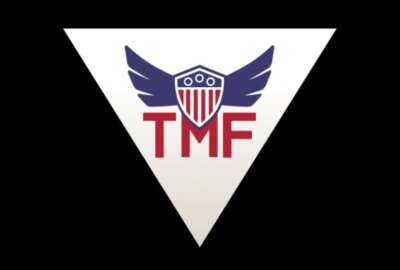One member of the Technology Modernization Fund board would like to see agencies lean into artificial intelligence and automation projects, especially those that have a “customer experience” angle.
“One of the things that I would love to be able to see more of . . . is more artificial intelligence, robotic process automation, machine learning,” Sheena Burrell, chief information officer at the National Archives and Records Administration, said during an event yesterday hosted by Venable to celebrate the TMF.
Burrell is on the seven-member TMF board that provides funding recommendations and monitors the progress of projects.
The TMF has so invested $750 million into 45 projects across 27 federal agencies. Many of those projects have focused on areas like cybersecurity, zero trust and customer experience.
Burrell said “the American people are really excited about” gains being made with generative AI, and suggested they would want to see it used in the different applications the government uses to interact with the public.
“I would love to be able to see more of those type of projects that come in,” Burrell continued. “And those are more your innovative types of projects and things that agencies may not necessarily have that kind of discretionary funding to be able to invest in those things, but they do have a big impact to the rest of the American population as it could streamline your processes, automate those processes and provide a good user experience.”
Burrell’s comments come as federal agencies explore how they can apply AI to their missions and the services they provide to the public. The Office of Management and Budget is circulating draft AI guidance that will tell agencies how to use and manage the technology.
In the Senate, lawmakers have proposed bipartisan legislation that would require federal agencies to notify individuals when they are interacting with or subject to decisions made using AI or other automated systems. It would also require agencies to set up an appeals process that ensures there is human review of AI-generated decisions.
In addition to the transparency bill, Senate Homeland Security and Governmental Affairs Committee Chairman Gary Peters (D-Mich.) has also proposed the AI Leadership Training Act to ensure federal officials understand AI.
“Now is the time to ensure that the algorithmic systems that the government buys do not have unintended or harmful consequences,” Peters said during a hearing last week. “Guardrails are more important than ever. Federal agencies are inundated with sales pitches and technology demos promising the next big thing, and while the federal government must be forward thinking, we also have to be cautious in procuring these new tools.”
Meanwhile, the House Oversight and Accountability Committee on Wednesday advanced the Modernizing Government Technology (MGT) Reform Act to extend the TMF Board through 2030. The bill would also specify that the TMF Board should focus its investments on projects that would have the “greatest impact on modernizing, retiring or replacing federal legacy information technology systems.”
The bill would additionally eliminate the Office of Management and Budget’s ability to provide agencies a waiver that would allow them more than five years to repay the loans. And it would also require the General Services Administration, which manages the TMF, to receive enough money back from agencies to keep the fund operational until December 2030.
During the event today, Burrell said repayment flexibility has enticed more agencies to seek investments from the fund.
“There were a lot of agencies that were very nervous to take advantage of the TMF because of the repayment, and how would they pay the money back? And when would the money need to be paid back?” Burrell said. “And what if there wasn’t any cost savings from the investment?”
“One of the big things I’m seeing right now is, as more agencies are making use of the TMF and the flexible repayment option, I think that we’re seeing more people who want to take advantage of that, we’re seeing more creative ways in terms of repayment,” she added.
Copyright
© 2024 Federal News Network. All rights reserved. This website is not intended for users located within the European Economic Area.





